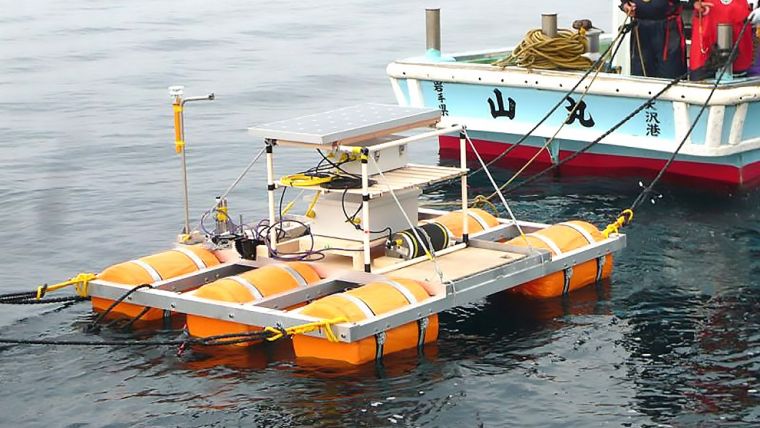Raft-mounted Multifrequency Acoustic Zooplankton Fish Profiler with Cellular Modem
The National Research Institute of Fisheries Engineering (NRIFE, Kamisu) of the Japan Fisheries Research and Education Agency (FRA, Yokohama) has been deploying an ASL Environmental Sciences multifrequency Acoustic Zooplankton Fish Profiler (AZFP 125, 200, 455 and 769kHz) in Yamada Bay, 450km north of Tokyo, since 2013. The collected data is being used to understand seasonal variations of zooplankton in the water column. As the AZFP is battery powered and enclosed in a pressure case, periodic recovery has been necessary to access the data.
To help the scheduling of the release of hatchery reared juvenile salmon and increase their survival in the sea, upgrades were purchased by FRA scientists in 2016 which included a solar-powered datalogger with a cellular modem for the AZFP and a Conductivity Temperature (CT) sensor. The datalogger acquires raw data from the AZFP and then averages the data into 1 m bins over a ping interval of 30 pings. These data are then retrieved on demand via a cellular modem and downloaded to the NRIFE's offices.
The deployment of this upgraded system in 2016 was successful and, as a result, FRA purchased a second ASL-built solar-powered datalogger with a cellular modem in 2017 for deployment in the spring 2018.
The raft-mounted system includes a solar panel, a charge controller, rechargeable batteries, a datalogger with AZFP data software, serial connections to the CT sensor and AZFP and a cellular modem all in two weather-proof enclosures.














